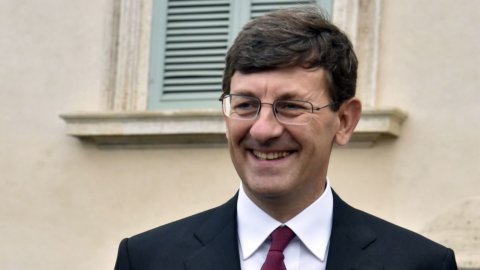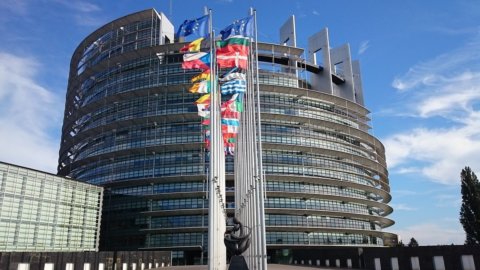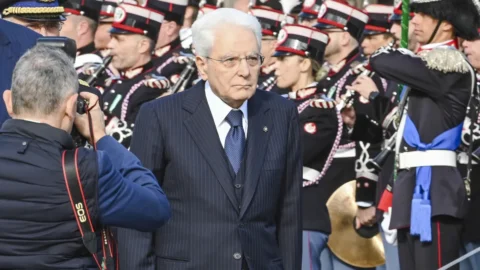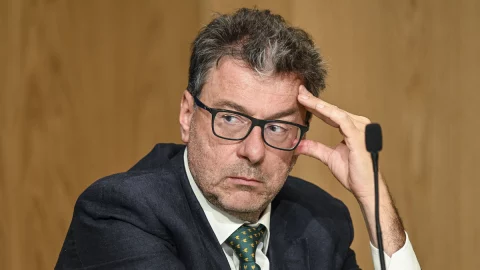What will the Minister for Technological Innovation have said to each other in videoconference on Tuesday Vittorio Colao and Fabrizio Salini, CEO of Rai? As far as we have been able to verify, it was a conversation that was both formal and substantial, albeit still marked by the need for dialogue on the common interests and objectives that the two parties pursue.
Both, in fact, find themselves in exceptional circumstances where the time factor is decisive. On the one hand, the minister, within his competence, has the obligation to prepare the areas of intervention to be included in the Recovery Plan which will have to be delivered to Brussels within the set deadline of 30 April, barring exceptions not yet foreseen. On the other hand theAD Rai is in the balance between the expiry of his mandate, foreseen with the approval of the financial statements and with the times and methods defined by Law 220 of 2015 and the need to leave the company in adequate "technological" conditions (the long-awaited "media company") to support the arduous challenges that lie ahead in the near future.
So, as far as can be assumed, Colao e Salini they may have thought about possibility of including Rai in some part of the Plan that can allow the Public Service Company to get on the train that cannot be missed, under penalty of being cut off from possible development prospects. But what exactly are the main commitments and deadlines looming over Viale Mazzini? Last October, in Rai Supervision, the CEO Salini presented the scenario to the parliamentarians in a clear and unequivocal way: “…the ongoing pandemic has further aggravated if not even compromised the economic-financial situation for the years 2021-2023 and we are not yet able to assess the possible consequences". The envisaged framework is entirely oriented towards maintaining revenues (license fees and advertising) and reducing costs (the official document reads "possible reduction of the scope of activity and/or employment") where, inevitably, it is difficult to hypothesize investments for development and innovation. Here then is a possible inclusion of Rai in some fold of the Recovery Plan could mean a shot in the arm essential to adequately face the future of the Company.
But what exactly are we talking about? What could be the themes of a possible next more operational confrontation between Colao and Salini (or with who will take over from him if anything should soon take place on the Rai board of directors as many parties of the government majority have requested)? In which areas should urgent action be taken? As is well known, there has been a bitter competition between broadcast and broadband for some time, between traditional digital terrestrial or satellite broadcasting systems and the Internet. Rai is on the market and competes with its products with its Rai Play platform which has also received significant approval since it was launched last year but suffers from the lack of its own network for the diffusion of multimedia contents (CDN, Content Delivery Network) for which a substantial rental fee is currently paid to Akamay, one of the most important companies in this sector. A proprietary CDN network for Rai is an obligatory and economically demanding choice: estimated at over 100 million euros. Moreover, this is an argument that could very well be placed in the context of single network company that sooner or later could also see the light. Also for Rai the BUL will be the "battlefield" in the near future which will add up to that already foreseen and programmed: the transition to DVB-T2 which we have written several times on these pages.
ALSO READ: Mandatory TV scrapping at the start: this is how it works
All this, in structural operating conditions of the Company that require heavy iinterventions in order to reduction, modernization and efficiency of often obsolete systems. These are processes that have a cost and not even a small one. On the eve of the launch of the current Rai Industrial Plan in 2018, the budget necessary to deal with the restructuring of the VHF Mux was calculated at around 200 million euros. Since then the situation, also thanks to Covid, has certainly not improved.
Again: Rai suffers from a serious misalignment between the production system and the distribution system. On the one hand, you would like to distribute your content in 4K to be competitive on a market that is already looking at 8K while, on the other hand, you are unable to supply/produce adequate content.
Then, it is likely that it could also enter the agenda the dossier on the transmission towers where Rai is present with the listed Rai Way. For some time the "pole of the towers" has been at the center of the debate on its opportunity and convenience to arise and also for Rai the time could soon come to decide whether or not to get rid of the residual quota available to be placed on the market (it currently holds approximately 65% of the shares) and raise cash for technological investments.
Another sector of great interest (as well as significant costs) is the complete sector digitization of the enormous Rai archive: precisely on this issue there could be a glimmer of light to explore: in some European countries (Portugal) it seems that a project is being drafted to finalize a portion of their Recovery Plan precisely in this direction, which could make resources available profits to invest in other sectors. Finally: the technological architecture of Rai is struggling to enter the data-driven world, i.e. the punctual and detailed knowledge of one's own audience, of their profiling, i.e. the necessary and indispensable condition for access to television in the near future which is building its empire on "Big Data". Today, the only user knowledge tool available to broadcasters consists of Auditel data which detect television "consumption" with the six main devices (TV, Smart TV, Computer, Tablet, Smartphone and Game console) and for just over Auditel Standard Digitale (DTT, DST and IP) is also in operation for a year: that's a lot but still not enough.
Finally, it should be noted that on the same day of Tuesday the Minister took part in the event promoted by AsVis (Italian Alliance for Sustainable Development, Institute formerly directed by Enrico Giovannini, now Minister of Transport) where he illustrated the priority areas of his government programme. First of all, it concerns the development of the BUL network where he argued that "... We cannot afford to waste any more time...". The modernization of the Public Administration falls within this framework, an indispensable driving force for a correct relationship with citizens and therefore health, education and research. Finally, a topic of great importance and strategic interest for business development: IT security. With these words and with this address we can read the meaning of the virtual meeting on Tuesday: hurry up. For Rai, just like for the rest of the country, there is no time to lose.





